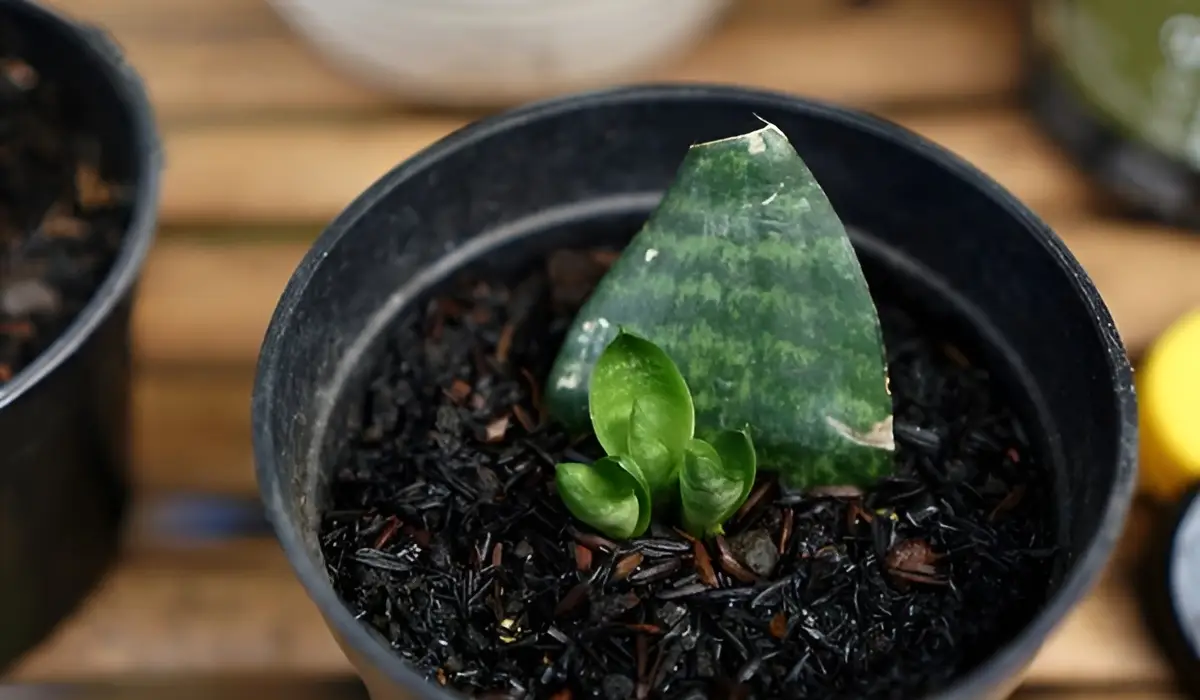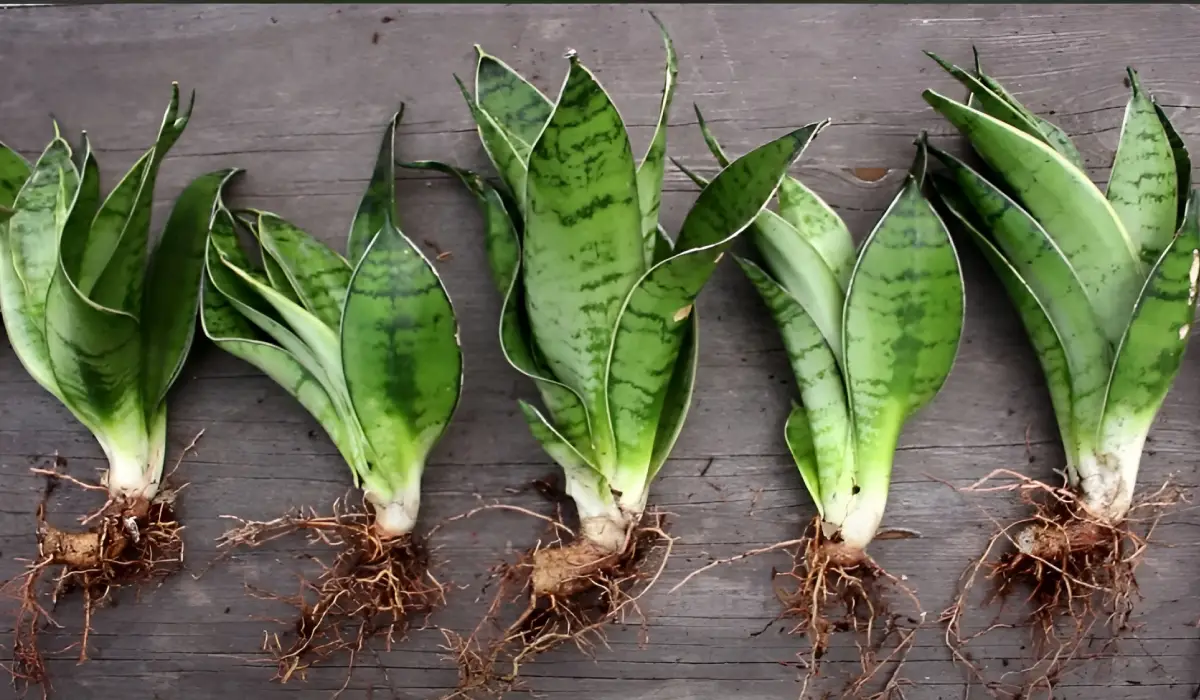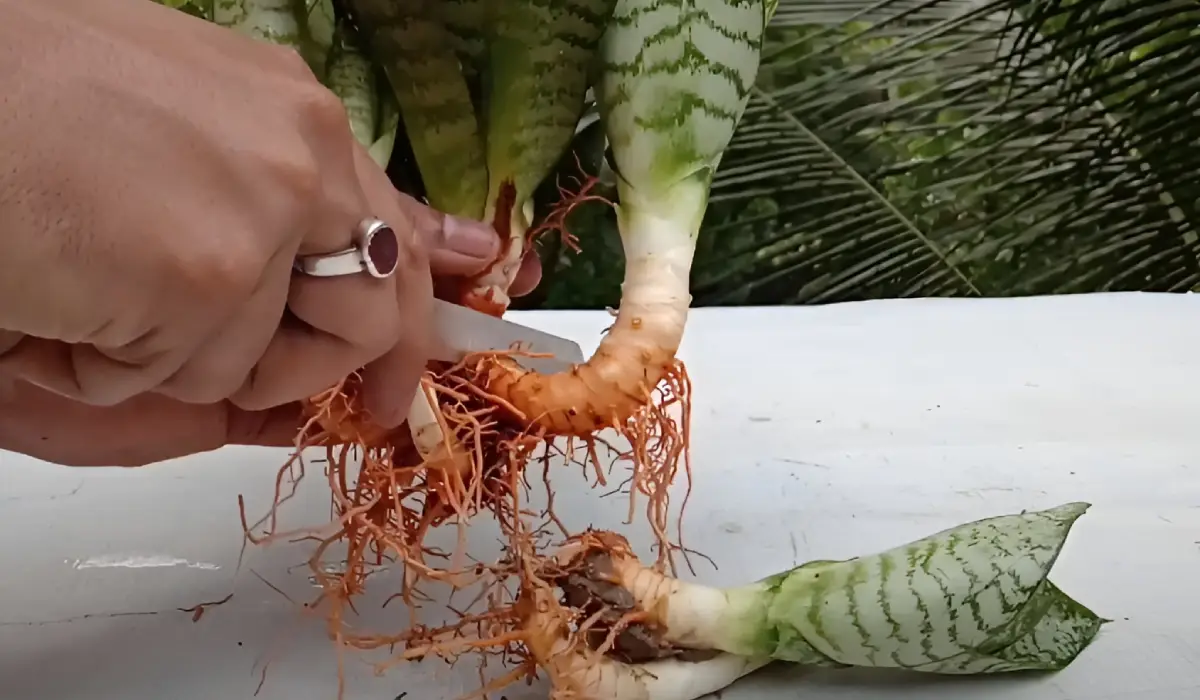4 Proven Methods of Snake Plant Propagation
If you’re a snake plant lover, chances are you’re always looking for ways to grow your collection. But did you know you can create your own baby plants without a greenhouse or expensive equipment?
Propagating snake plants is a simple, rewarding process that lets you multiply your favorite plants at home. While it requires a few basic supplies and a bit of patience, you’ll learn how to propagate snake plants in no time.
Whether you’re a beginner or a seasoned plant parent, this guide will walk you through four easy methods to grow new snake plants and expand your indoor jungle.
Let’s get started!
Table of Contents
What is Plant Propagation?
Plant propagation is the process of creating new plants from existing ones. It’s a natural and cost-effective way to grow your plant collection, share plants with friends, or even save a struggling plant.
There are two main types of propagation:
- Sexual propagation, which involves growing plants from seeds
- Asexual propagation, which uses parts of a parent plant, such as leaves, stems, or roots.
Snake plants are typically propagated asexually, as this method produces clones of the parent plant, ensuring the new plants have the same characteristics.
4 Easy Ways to Propagate a Snake Plant
Our 4 simple methods of propagating a snake plant are:
- Propagate Snake Plants in Water
- Propagate Snake Plants in Soil
- Propagate Snake Plants by Division
- Propagate Snake Plants from Rhizome Cuttings
Each method has its own advantages, so choose the one that best suits your needs and experience level. Let’s dive into the details and help you get started!
How to Propagate Snake Plants in Water?

Source: Cori Sears
Propagating snake plants in water is an easy and beginner-friendly method. This method allows you to watch the roots develop before transplanting them into the soil.
Follow these steps for a successful water propagation process.
Step 1:
Choose a mature, healthy leaf from the plant. Avoid damaged or yellowing leaves. Cut the leaf close to the base. Then, slice it into 2-3 inch sections. Make sure to note which end was closest to the root.
Step 2:
Put the cuttings in a jar or glass of water, ensuring the bottom end is submerged. Avoid flipping the cuttings upside down, as they will not root properly.
Step 3:
Change the water once a week to prevent bacteria and rot. Keep the jar in indirect sunlight—too much direct sun can cause algae growth or leaf damage.
Step 4:
Roots typically start forming in 4-6 weeks. Once the roots reach 1-2 inches long, the cuttings are ready for soil. If you don’t see roots after six weeks, be patient and ensure the water is clean.
Step 5:
Fill a pot with well-draining succulent or cactus soil. Make a small hole and gently place the rooted cutting inside. Cover the roots with soil and lightly water. Keep the plant in bright, indirect light and allow the soil to dry between waterings.
Why choose water propagation?
- Great for beginners—it’s easy and fun to watch roots grow.
- Helps ensure healthy root development before planting.
Challenges of water propagation
- Snake plants grown in water may struggle when transplanted into soil.
- If the water isn’t changed regularly, bacteria can cause the cuttings to rot before they develop.
How to propagate Snake Plants in soil?

Source: Rosy Soil
Soil propagation is a reliable method that helps snake plant cuttings develop strong roots. It requires less maintenance than water propagation and has a higher success rate.
Follow these steps for a successful water propagation process.
Step 1:
Choose a mature, undamaged leaf. Cut it near the base. Then, slice it into 2-3 inch sections, keeping track of the bottom end.
Step 2:
Place the cuttings in a dry, shaded area for 1-2 days. This allows the cut ends to form a callus, which helps prevent rot when planted.
Step 3:
Use a pot filled with succulent or cactus mix for good drainage. Insert the cuttings bottom side down, pressing the soil gently around them.
Step 4:
Water sparingly to avoid rot. The soil should be slightly moist but never soggy. Place the pot in bright, indirect sunlight for the best growth.
Why Choose Soil Propagation?
- Higher success rate than water propagation.
- Less maintenance—no need to change water weekly.
- Stronger roots that adapt quickly to the soil.
Challenges of soil propagation
- Unlike water propagation, roots take longer to form in soil.
- You can’t see the roots developing, making it harder to track progress.
How to propagate Snake Plant by division?

Division is the fastest way to create new snake plants. It works best for mature, overgrown plants with multiple leaf clusters.
Follow these steps for a successful division propagation process:
Step 1:
Gently take the snake plant out of its pot. Shake off excess soil to expose the root system.
Step 2:
Using clean hands or a knife, divide the plant into smaller sections. Each section should have at least 2-3 leaves and healthy roots.
Step 3:
Place each division into a new pot with well-draining succulent or cactus soil. Firmly press the soil around the roots.
Step 4:
Water lightly after planting. Keep the new plants in bright, indirect sunlight to help them adjust.
Why choose division propagation?
- Instant full-sized plants—no waiting for roots to grow.
- Healthier growth—helps an overgrown plant thrive.
- Less risk—cuttings don’t need to develop roots.
Challenges of division propagation
- This method only works if the snake plant is large enough to divide.
- Separating sections can accidentally break roots.
How to propagate Snake Plant from rhizome cuttings?

Source: Green Bengal
Rhizome propagation is a less common but effective way to grow new snake plants. It works best for mature plants with strong underground stems.
Step 1:
Gently dig around the base of the plant to find thick, underground stems (rhizomes).
Step 2:
Use a sharp, clean knife to cut sections, making sure each piece has at least one growth point (small bud or shoot).
Step 3:
Place the rhizome sections in succulent or cactus soil, positioning them horizontally for better root development.
Step 4:
Avoid overwatering—keep the soil slightly moist and place the pot in bright, indirect light.
Why choose rhizome propagation?
- Strong, healthy growth – New plants develop from established underground stems.
- Less risk of rotting – Compared to leaf cuttings, rhizomes are more resilient.
Challenges of rhizome propagation
- Young snake plants may not have well-developed rhizomes to cut.
- Needs Careful Cutting – Each section must have a growth point, or it won’t develop into a new plant.
Final Takeaways
Propagating snake plants is an easy and rewarding way to grow your collection, share plants with friends, or rejuvenate an aging plant. Whether you choose water, soil, division, or rhizome cuttings, each method offers a simple way to create new plants with minimal effort.
No matter your experience level, you can successfully propagate a snake plant with just a few basic steps. So why wait? Pick a method, gather your supplies, grow new snake plants, and enjoy a thriving indoor jungle. Happy propagating!
FAQs
Both methods work, but soil propagation has a higher success rate. Water propagation is great for beginners because you can see the roots growing, but cuttings may struggle when transferred to soil. Soil propagation helps plants develop strong roots from the start and requires less maintenance.
Change the water once a week to prevent bacteria and rot. Use room-temperature, filtered, or dechlorinated water for healthier root development.
Yes, but they require nutrients to survive. If growing in water long-term, add liquid fertilizer every few weeks. Also, refresh the water regularly to prevent bacteria and root decay.
The best method depends on your goal:
- For beginners – Water propagation (easy to track root growth).
- For faster results – Division (creates full-sized plants instantly).
- For strong roots – Soil propagation (higher success rate).
- For experienced growers – Rhizome cuttings (effective but less common).
Yes, you can grow a new plant from a leaf cutting placed in either water or soil. However, leaf cuttings won’t retain variegation (patterns on leaves) in certain varieties.
How to force a snake plant to produce pups?
To encourage pups (baby plants), provide optimal conditions:
- Bright, indirect sunlight – Avoid too much direct sun.
- Well-draining soil – Prevents root rot.
- Infrequent watering – Let soil dry out between waterings.
- Fertilizer – Use a diluted houseplant fertilizer during the growing season (spring/summer).
Yes! If a leaf breaks, cut it into sections and propagate in water or soil. Make sure to keep track of the original bottom end, as it must be planted facing down to grow roots.
Yes, but it won’t grow back as the original leaf. Instead, you can propagate the broken piece and grow a new plant from it. Simply follow the leaf-cutting propagation method in water or soil.
